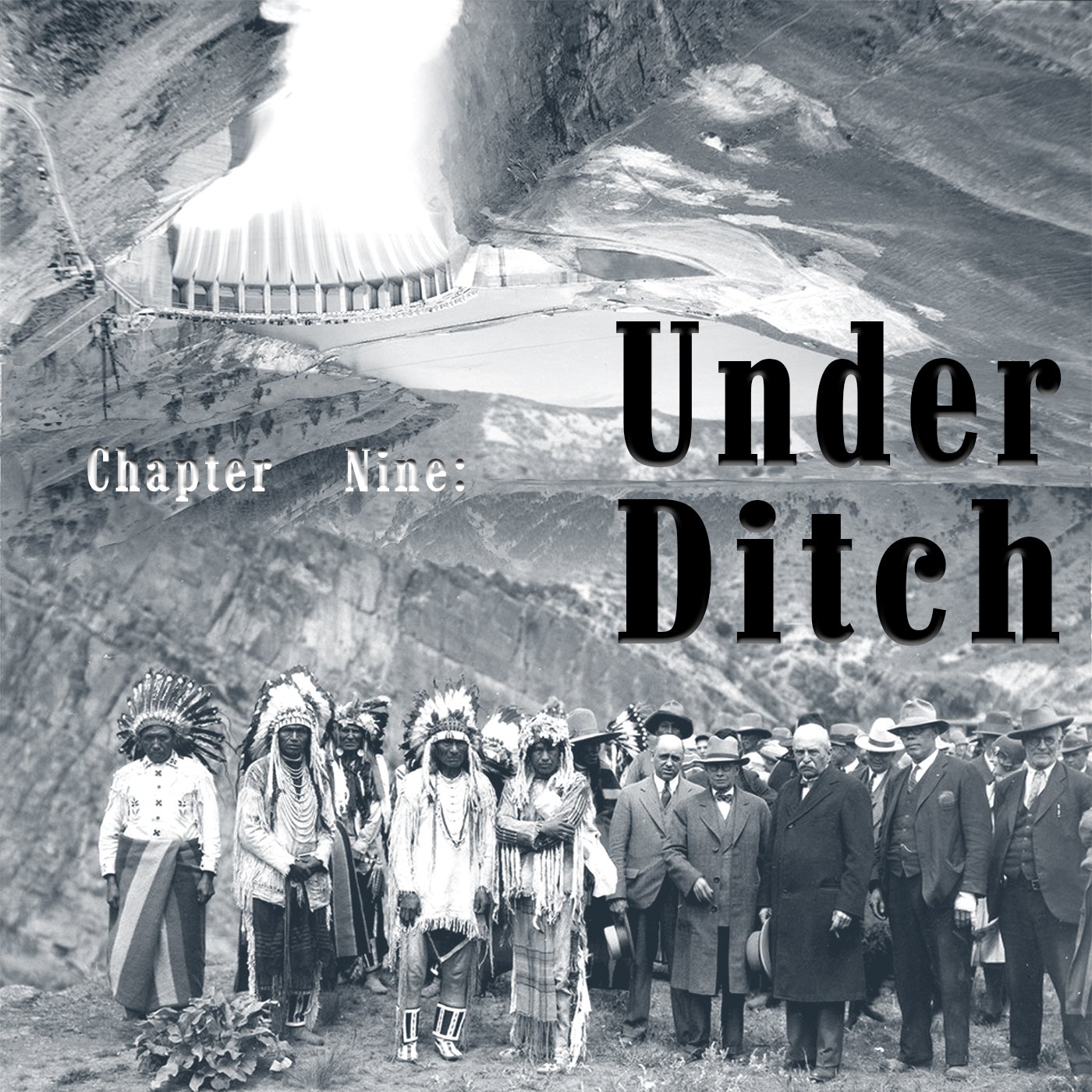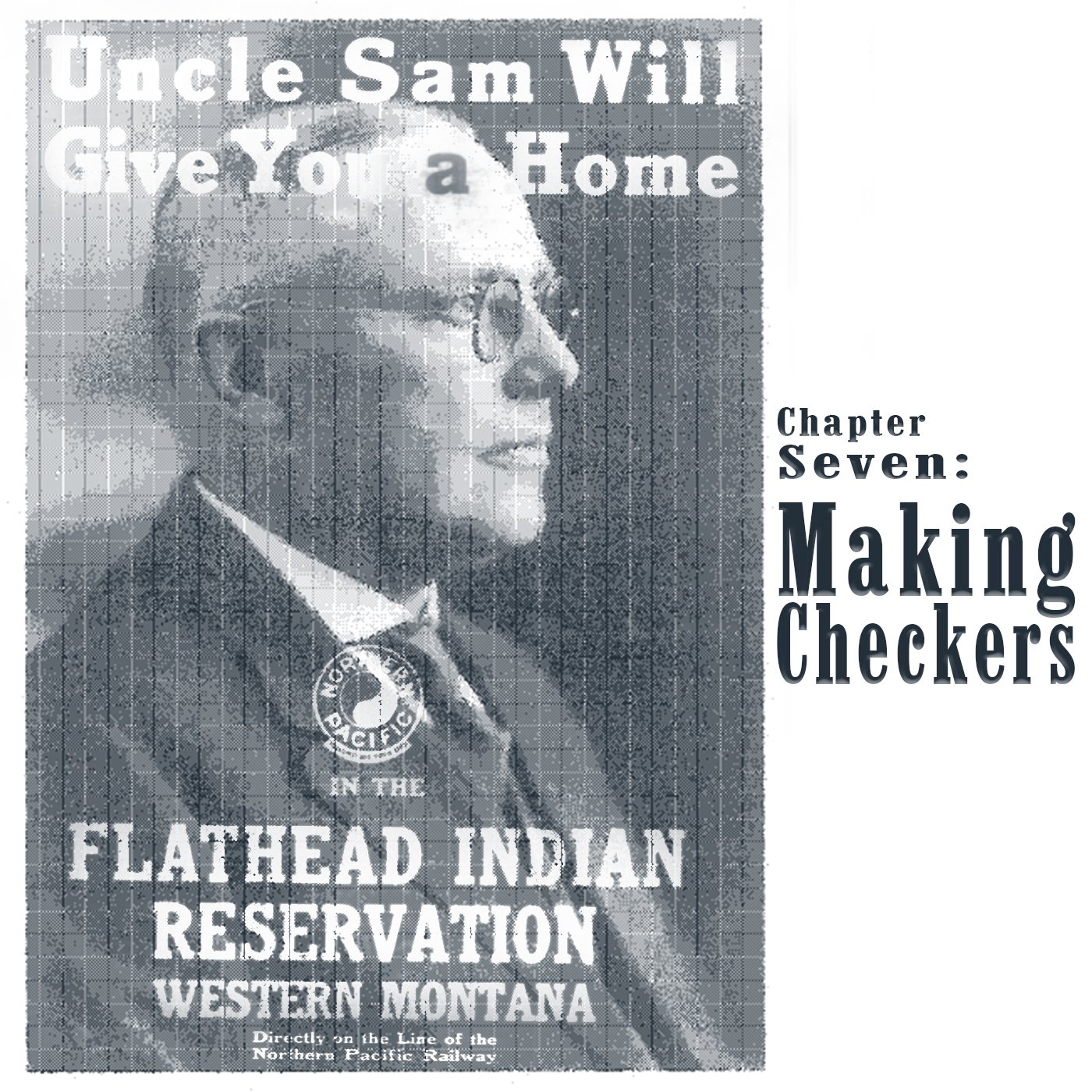Chapter Ten: The Big Store
In the last episode of Land Grab, we try- as best we can- to unravel the twisted up tentacles of the Missoula Octopus. As the Great Depression washes over Montana, one organization seems remarkably immune: the Missoula Mercantile Company, which imbedded within every industry in the county, and floats the entire region throughout the turmoil.
Throughout the run of this show, we’ve seen the Merc spread across Western Montana, ruling Missoula county and pulling in a constant, steady stream of cash from everyone in the area. But, starting at the turn of the 20th Century, that vast majority of that wealth, generated in Montana, began flowing upward and outward to the West Coast. This chapter, we follow the money and catch up with an old friend in San Francisco: Andrew B. Hammond.
Chapter Nine: Under Ditch
In the penultimate episode of Land Grab, we conclude our narrative on the ground on the Flathead Reservation with the story of the Flathead Irrigation Project and the construction of Kerr Dam. After tracing the path of multinational corporations like Standard Oil and Amalgamated as they took over Montana in the early 1900’s, we are going to see in this chapter how those multinationals imposed themselves on the Reservation, and confiscated the tribes’ most valuable remaining resource: the power site on the Flathead River Falls.
Chapter Eight: Kicked by a Copper Boot
In Chapter Eight of Land Grab, we take a deep dive into the takeover of the Anaconda Company by Standard Oil, and the vicious decades of hegemonic corporate rule that followed in the 20th century. We look at how this reviled villain in “The Company”, and the devastating bust that brought an end to the homestead boom we covered in the last two chapters, conspired to bring Joseph M. Dixon out of the political wilderness to run for Governor in 1920, finding himself right at the heart of a conflict with Anaconda that would define a decade of Montana history.
Chapter Seven: Making Checkers
The Flathead Allotment Act was passed in 1904, but the reservation was not opened until 1910. But those 6 years were far from idle. This chapter of Land Grab looks at how the white community of Missoula circled around the reservation, smelling a profit, while the native Salish, Pend D’Oreille, and Kootenai people fought to hold on to the last vestiges of their homeland.
This chapter also examines the massive homestead boom into Montana in the 1910’s, that brought tens of thousands of honyockers onto the Flathead and the whole state, inspired by railroad propaganda to claim as much government homestead land as possible and plow Montana’s arid prairies into vast wheat farms.
Chapter Six: Savage Habits
Land Grab is back with the first episode of the second part of our series on the history of the Missoula Mercantile Company, corporate control of Montana, and the allotment of the Flathead Indian Reservation at the turn of the 20th century in Western Montna. In this chapter, we look at the rise of Montana politician Joseph Dixon, a young North Carolinian who moved to Missoula and ascended rapidly to national office with the support of the Missoula Mercantile’s political machine.
In Congress, Dixon worked to find a legislative means to force the Flathead Reservation open to white settlement over the vehement opposition of the Salish, Kootenai, and Pend D'Oreille tribes. At the same time, his employers- the Missoula Merc- were moving their enterprise onto the reservation, and getting in prime position to clean up once the Flathead goes on sale.
Chapter Five: The Missoula Octopus
In the cumulative chapter of the first half of our season, we find Andrew Hammond at the peak of his powers in Missoula in the 1890’s. The Bitterroot Salish have left the valley and Marcus Daly’s Anaconda Company fills the vacuum.
Statewide, the Capital and the University are up for grabs, and Hammond makes a number of under the table deals to try and secure Missoula the University, and Helena the Capital. But a growing local resentment and the reappearance of the federal investigations into illegal timber poaching in Hammond’s operations eventually drive him out of Montana to avoid the scrutiny.
After Hammond leaves, he puts his nephew, C.H. McLeod in charge, and McLeod sets about softening the brand of the Missoula Mercantile and obscuring its real ownership.
Chapter Four: Exodus
In the fourth chapter of Land Grab, 20 years of pressure comes to a head, as Charlo’s bands of Salish people in the Bitterroot valley are finally forced out by troops from Fort Missoula, and make the long walk through downtown Missoula and up to the Jocko Reservation. We go deep into the circumstances that ultimately brought Charlo and his people to that decision, and find Andrew Hammond’s influence everywhere.
We also see Montana officially enter the Union as the 41st state, and witness Hammond go to war with his former partner, Marcus Daly, over the shape that new state will take.
Chapter Three: Depredations
In this chapter, the political intrigue really takes off on another level. Last episode, we laid out the formation of the Montana Improvement Company: a massive timber monopoly created to build the transcontinental railroad and the Anaconda Company smelter. In this episode, we dive into the actual operation of that monopoly, as Andrew Hammond, Marcus Daly, and their partners construct their illegal monopoly, draw the full ire of the federal government, and launch one of Montana’s biggest ever political conspiracies.
All the while, the Bitterroot Salish are getting increasingly squeezed out of their homelands. Just as the Improvement Company reaches the peak of its political powers, Hammond and his partners announce plans to build a railroad branch line through the Bitterroot Valley, and start the final legislative push to forcibly remove Charlo and his people.
Chapter Two: The Big Deal
In chapter two of Land Grab, our narrative for the season kicks off in earnest. We meet the key figure for the rest of the show: Andrew B. Hammond, and chart his journey from teenage lumberjack to prospector to partner in the corporation that will become the Missoula Mercantile.
In the Bitterroot Valley, future President James Garfield arrives and forges an agreement that claims Chief Charlo’s Salish band are willing to leave their homelands. The forgery enrages Charlo and sets the Salish up for decades of tensions with the Valley’s white settlers.
And we finish up the episode by examining the most consequential business deal in Montana history, as the Northern Pacific Railroad comes to town and partners with Hammond and the Anaconda Copper company to create a new timber monopoly in the territory that will build the railroad and the giant smelter at Anaconda.
Chapter One: Foreign Country
Welcome to the first season of Land Grab! In this first chapter, we’re laying out the terms of the story we’re going to tell in this season: the story of the opening of the Flathead Indian Reservation to white settlement; and the real foundations of Missoula and Western Montana.
This first chapter largely focuses on the precolonial history of Montana. We’ll learn about the origins of Montana’s aboriginal people, and the complex societies they developed over tens of thousands of years in the area. We then move into the early interactions between the indigenous people in the region and the first white explorers, trappers, and settlers who ventured into the Northwest: from Lewis and Clark to the Hudson Bay Company.
And we’ll finish the episode by looking at how the Flathead Reservation came into existence with the Hellgate Treaty of 1855. We’ll dive into the miscommunications and outright deception used by Washington Territorial Governor Isaac Stevens to engineer a treaty agreement on paper that was vastly different from the one tribal negotiators believed they were signing. And we’ll end as the first permanent settlement, a little shanty town called Hellgate, gets started in the Missoula valley, right as the first gold discoveries are made in the area, and Montana explodes into a new age.










